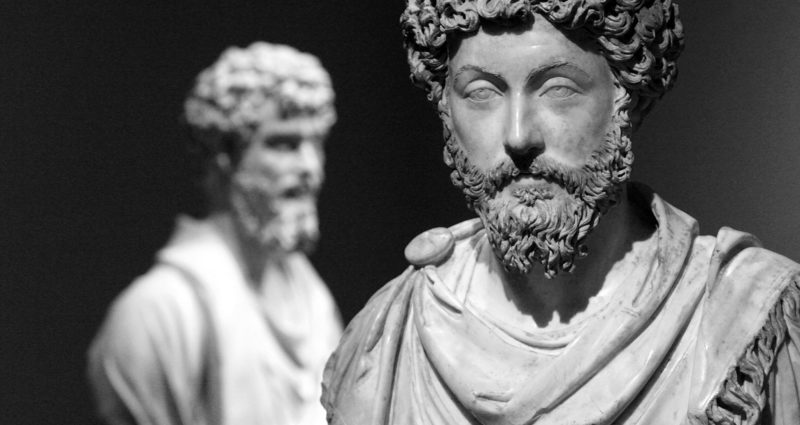In Ancient Greece, a tyrant (τύραννος) was someone who seized absolute power over a city by force, without due consideration for tradition or law. The word did not necessarily have a pejorative connotation. Not all Greek tyrants were hated men; some were popular rulers in their time. But the worst of tyrants are remembered for their cruelty. They exemplify how unchecked power and arbitrary rule can easily degenerate into exploitation. This points to the fact that the concept of tyranny does not only apply to governments. Tyranny, I will argue, is something that can occur at different levels of society.
The Fog of War
The photo above was taken by Robert Capa, the only civilian photographer to follow the Allied troops landing at Omaha Beach on June 6, 1944. Capa took 106 photos that day. But then something very unfortunate happened. Most of the pictures were destroyed in a processing accident. Only eleven survived. They are known as “The Magnificent Eleven.”
These photos — mostly blurred, surreal shots — convey the intensity and chaos experienced by soldiers on the front line as the invasion unfolded. In hindsight, it turns out that the invasion was a great success, but it certainly didn’t feel that way for the soldier when he first landed. That soldier stepped right into a fog of war, and into a dangerous and uncertain fate.
The Origins of Reason
What does it mean, to be rational? This is the question that Hugo Mercier and Dan Sperber ask in their revolutionary book, The Enigma of Reason. This book was a complete revelation to me. It shattered some of my most deeply held beliefs about intelligence, and its implications for our understanding of human nature are profound. I here summarize some of its main ideas, weaving in some of my own thoughts along the way.
Does Reputation Matter?
It is fascinating to observe how people become obsessed with their reputation. This is especially true in the era of social media. I find this fascinating because I believe that reputation is something that is very hard to control: it takes time to build, but can easily crash. Moreover, I have always thought that people who are excessively concerned about their image easily become false and superficial; and that caring too much about reputation makes you a slave to the opinions of others.
So why is it that reputation is such an important concern in our societies? The Italian philosopher Gloria Origgi offers a fresh and extensive understanding of reputation as a psychological and social phenomenon in her book Reputation: What It Is and Why It Matters. I here summarize some of the main points made by the author.
Radical Candor
Kim Scott’s book Radical Candor is a truly fascinating management book. You can tell it is a good book because it is hard to summarize. Each chapter is filled with insightful ideas and stories from her experience working as a top manager in Silicon Valley companies. Moreover, Scott’s theories are informed by her first-hand experience about what works in practice, unlike much academic prose (such as Barling’s The Science of Leadership, which despite the impressive title is just a literature review of hundreds of disparate and ultimately useless leadership theories invented by scholars.) This article only draws upon the first two chapters of Scott’s book, which address the following question: as a manager, how do you establish a trusting relationship with the people who report to you?
The Art of Dealing with Difficult People
The modern relevance of Stoic ideas is beautifully explained by the American philosopher William B. Irvine in two of his books, A Guide to the Good Life: The Ancient Art of Stoic Joy and A Slap in the Face: Why Insults Hurt, and Why they Shouldn’t. I here summarize some of the ideas espoused by the author, with a specific focus on the life advice that the Stoics had for dealing with conflict in human relations.
The Ajax Dilemma
The Ajax Dilemma is a fantastic interpretation of the Iliad by the classicist philosopher Paul Woodruff, centering on the tensions arising between Ajax, Odysseus, and King Agamemnon. The ethical lessons that can be drawn from this work are truly eye-opening. I here quote, paraphrase, and summarize some of the main themes of the book.
Understanding Competition and Cooperation
Contemporary society literally surrounds us with a semantic mess when it comes to the way human interactions are to be “managed.” On the one hand, we are bombarded with terms such as collaboration, cooperation, and teamwork, usually on the grounds that they are ideals to be pursued; on the other hand, there is competition, confrontation, and conflict, which are associated with all kinds of unwanted behavior. How do we differentiate all these terms from each other? Do they really allow us to better understand the way we interact? How do we evaluate whether one or the other is in fact good or bad?
The Art of the Sale
Economics tells us that selling is about understanding a customer’s needs and delivering a product to meet them. In the world of homo oeconomicus, the success of a transaction depends on what the customer is willing to pay, and the price at which the seller is willing to sell. As soon as there is a match, there is a sale. Management textbooks describe elaborate step-by-step sales procedures, as if sales were only about being organized and proactive.
In most real-world situations, however, sales are quite unpredictable. Potential clients must be courted, discussions must be initiated, trust must be gained, and unconscious needs must be satisfied. Successful sales thus depend on a variety of structural and psychological factors. This article intends to examine these factors in greater detail and incorporates different personal, professional and scholarly perspectives.
On the Careful Use of Language
Although primates in general are among the most social of mammal species, very few primate groups are capable of supporting more than eighteen males. Beyond this threshold, interpersonal tensions and relations of hierarchical dominance become unbearable to individuals, causing the groups to split apart. But humans have been living in cities containing tens of thousands of individuals for several millennia, effectively making us the most sociable of all hominids. How did this happen?









